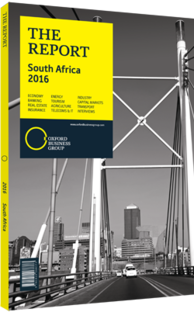South Africa makes efforts to improve reliability of power supply
One of the major factors holding economic growth back in South Africa is power shortages. While Eskom, the public utility, has 45,000 MW of capacity, an estimated one-third of this is currently out of commission due to a combination of scheduled maintenance and unexpected breakdowns.
Power Cuts
The electrical system has very little room for error and often struggles to meet demand, with this often resulting in periodic and targeted power cuts. The latest round of load shedding started in November 2014, when a silo collapsed at the Majuba power plant. It continued as the country faced temporary fuel shortages, water shortages at hydro plants and the breakdown of vital components. During the first eight months of 2015, South Africa experienced 99 days of scheduled power cuts. For its part, Eskom has an estimated funding gap of R200bn ($17.3bn), and has fallen behind on the addition of much-needed new capacity because of strikes, higher-than-expected costs and technical issues.
Additional Capacity
However, the government has developed a plan for making up the shortfall. It is building two coal-fired plants, Medupi and Kusile, which when finished will each supply 4800 MW of capacity. The first 794 MW came on-line in 2015, with more to follow through to 2018. A feasibility study on a third plant has also been undertaken. In addition, three mothballed plants were returned to service in 2014, while the 100-MW Sere wind farm went into operation in 2015, and a considerable amount of other renewable energy capacity is coming on-stream.
A series of other projects are in the works that could increase capacity and diversify generation. The Department of Energy’s Integrated Resource Plan calls for coal-fired electricity to account for less than 15% of all new generation capacity added through to 2030. Renewables are set to provide 42% of all new generation capacity. The plan includes the construction of 9.6 GW of nuclear energy and 11.4 GW of renewables, including solar and wind, by 2030 (see Energy chapter). There are plans to install six nuclear power plants by 2030, although the long lead times involved in getting these up and running have caused some to question the viability of atomic energy in South Africa.
Effect On Business
There have been complaints from the manufacturing, tourism and retail sectors that the cuts make things difficult in an already strained economic environment. Businesses are unable to commit to fresh investments or expansion until they are convinced of a reliable source of energy. “We will not have strong growth in investment until businesses can be assured of continuous supply of base load,” Goolam Ballim, chief economist and global head of research at Standard Bank, told OBG. Load shedding has been a particular problem for the minerals industry, which is a heavy user of electricity, and given the dominance of this sector the impact is felt across the entire economy. The effect has been compounded by the recent fall in commodities prices.
However, there is now widespread agreement that more power is needed in South Africa, and, while the funding requirements are certainly heavy, the planned new capacity should alleviate the pressure on the system once it comes on-line.
You have reached the limit of premium articles you can view for free.
Choose from the options below to purchase print or digital editions of our Reports. You can also purchase a website subscription giving you unlimited access to all of our Reports online for 12 months.
If you have already purchased this Report or have a website subscription, please login to continue.

